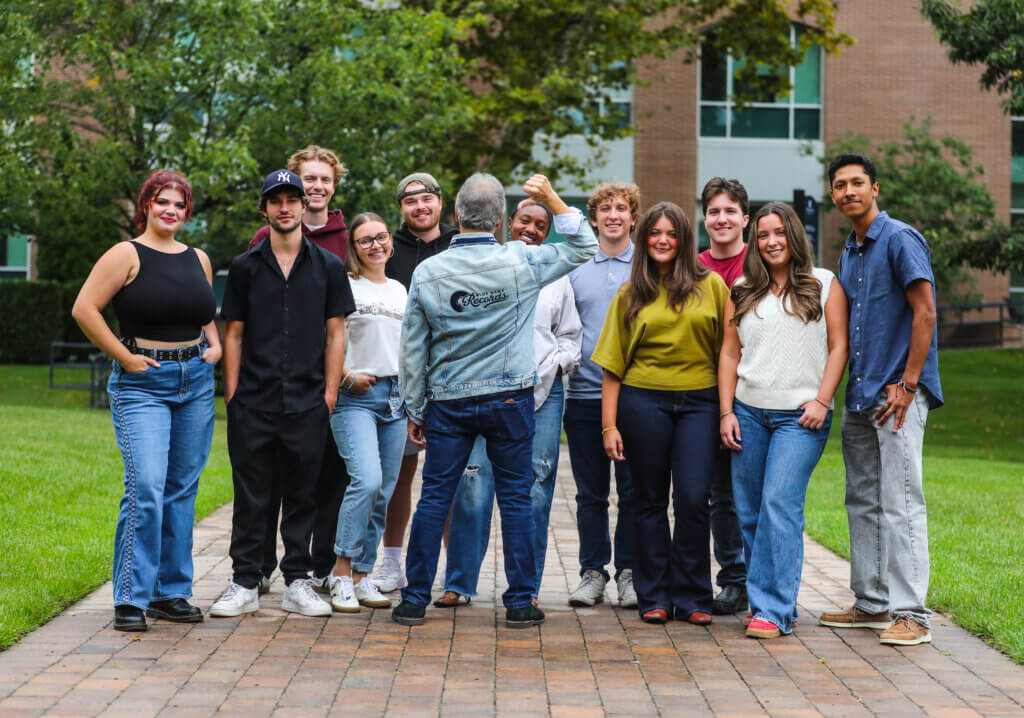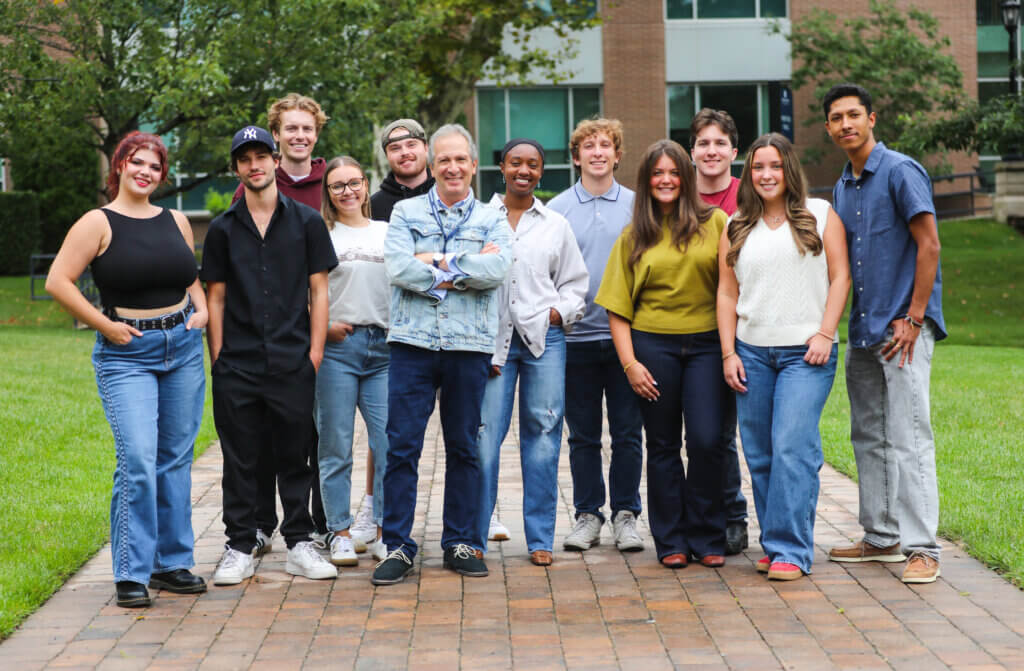This week in the Curatorial Corner, we’re featuring several guest bloggers with unique perspectives on our Born to Run 50th anniversary events. Here, Bruce Springsteen Archives & Center for American Music student worker Cameron Bacon writes about the Blue Hawk Records re-interpretation of Born to Run.
How does a group of 20 somethings (or younger for that matter) cover some of Bruce Springsteen’s greatest work 50 years after its initial release? How does this group completely reinvent these songs with their own influences? Students involved in Monmouth University’s student-run record label, Blue Hawk Records, and the University’s music industry program, proved just that this year with Runaway American Dream. I was a small part of the group involved in the production of this album, and let me tell you, it was not easy.
Normally, Professor Rapolla’s Record Strategies class works on one EP of original music that takes 14 weeks total to create from idea to release. But, with the 50th anniversary of Bruce’s Born to Run nearing, the class had a different task at hand: to create new and innovative versions of Born to Run songs within a few months. This would include re-producing the songs to fit each artists’ tastes, recording, content creation, album shooting, marketing, distribution, press releases, among the many other minute things that makes an album what it is.
Much like the original process of recording and writing Born to Run, this new album had plenty of problems that were to be solved. One, how to re-record these songs without losing the original messaging and intensity of the originals? Two, how do we create something that sounds not just good to the ears, but is also new and fresh – while keeping the Springsteen flare? It was no easy task.
The first song to be produced and fully fleshed out was “Thunder Road,” featuring ‘24 graduate Abby Garcia. ‘24 grad Mike Viani was the main producer on the track. Viani has always loved making ethereal sounding tracks as long as I have known him. Looking back one of the first tracks I had heard from him was “213” that also has Abby Garcia singing on it. Lately, for class when we have a song to record, we have to have an instrumental for a track produced before we go into Lakehouse Studio in Asbury to record vocals.
The original idea for the song was for it to be a duet, with Abby singing one part and another male alum singing another. But while we were in the studio, we realized that the track sounded better with a solo female vocalist. So, we ended up scrapping the duet idea and just stuck with Abby.
The second song to be done was “Tenth Avenue Freeze-Out.” From what I remember the original idea proposed by Rapolla was a doo-wop take on the song and would be sung by some members of the university’s chorus. We had current student John Terista make the arrangement for us. It included 8 of us in total singing on the track, including Antonia Bongiorno and Nora O’Rourke as sopranos, Amani Lillian and Taylor Wichterman as altos, me and John Terista as tenors, and Will Horn and Kylensky Miracle as basses.
For the original demo of the song, I actually helped produce it with John in this tiny studio that has been made in Woods Theatre at Monmouth. We had everyone come in one by one to record their part, unlike how the final version was with everyone singing at the same time. It took around 8-9 hours or so to get the full demo done, but it set a good basis for what we wanted to get in the studio.
When we got into the actual studio, Lakehouse in Asbury Park, we set up in a circle of the 8 of us to get one live take. We had laid down a couple takes until we got what we wanted out of each other. After that we had the soloists lay down their vocal takes, and I got to sing Clarence’s famous part while holding a pick used by his son Jarod. (It was a pretty cool full circle moment.)
“Backstreets” was probably the most interesting song of the bunch. It went through the most changes out of any of the songs and probably took the longest from start to finish to be completed. Originally the song was supposed to have more of like a gospel worship feel to it. It was going to have organs, live drums, 6-part choir (I think), and guitar as well.
When we were doing the original demo, we had it set up very similar to the “Tenth Ave” demo where people would go into the vocal booth one at a time to record their part. But after a lot of headaches and frustration and long nights in the studios we decided to hand over some of the arrangements to Professor Connor Hanson, who gave us the basis of what you hear now: Loop oriented, hip hop style indie. (Which honestly suits the song well.)
“Born to Run” was actually the first song to be conceived on the project, but because of the importance and complexity of it, the team needed to take its time with this classic. Rapolla first shared his concept of the song with the class early in the semester. It was actually after either the “Tenth Ave” or “Backstreets” sessions at Lakehouse where Rapolla was showing Hanson the idea for the song. He was singing his version but was also playing a version that Elijah Elias would perform on the final version.
When the song was recorded, the group went into Connor’s home studio to record the cover. It was decided too that an atmospheric guitar-driven vibe was the way to go for the cover. (That’s why if you were to find the files for the recording, you would see two tracks labeled “U2 1” and “U2 2” as a nod to The Edge.)
Lastly was “She’s the One.” This was more of a partnership between Micheal Anthony Rocks and Stevie 808 DiPietro, as they worked on the song almost exclusively by themselves up until the vocals needed to be recorded. M.A.R., as we call him, has always been known for bringing energy to songs so he was a great fit for this 80s synth-pop-inspired version of the song. Alum Kristen Wilczewski ‘21 provided vocals for both “Born to Run” and “She’s the One.” She added a powerful flair to both songs that stayed true to the originals but gave a hip new feel too.
Again, there was no easy path while making this album, and there were plenty of highs and lows that came with it, but we were very proud with the final product, and hope that you all will enjoy it as much as we do.
Cameron Bacon is a Music Industry major at Monmouth University who plans to graduate in 2026 and hopes to pursue a career in music production. His musical interests include U2, Bruce Springsteen, Oasis, The Police, and Inhaler. He has been involved with the BSACAM since June of 2024.
Runaway American Dream is available wherever you stream your music.


